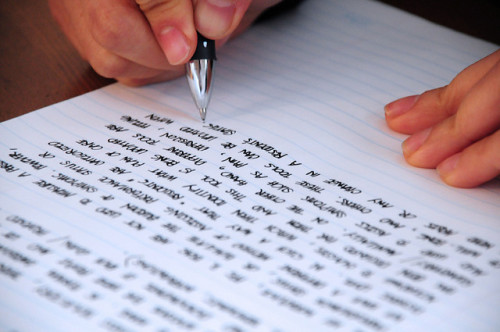Using plain, simple language doesn’t mean “dumbing down” your writing. It means getting your message across, clearly and unambiguously, the first time.
BY TRACEY HAWTHORNE
Here’s a nursery rhyme you probably know quite well:
A trio of sightless rodents,
A trio of sightless rodents:
Observe how they perambulate,
Observe how they perambulate.
They all pursued the agriculturalist’s spouse,
Who severed their caudal appendages with a carving utensil.
Have you previously observed such a phenomenon in your existence
As a trio of sightless rodents?
Don’t recognise it? How about:
Three blind mice,
Three blind mice:
See how they run,
See how they run.
They all run after the farmer’s wife,
Who cut off their tails with a carving knife.
Have you ever seen such a thing in your life
As three blind mice?
The two pieces of writing say exactly the same thing but in different ways – and there’s no doubt which one says it better.
The days of using over-long words and complicated sentence structures to come across as important or “educated” are long gone. Clarity and simplicity are now the watchwords in good writing.
Why is Plain Language important?
When you write something in Plain Language, your reader understands it the first time he or she reads it. Generally this is a good thing because most people are busy and don’t want to spend precious time “translating” complicated or poorly written documents.
In creative writing it’s also a good thing: as a writer, your job is to tell your reader a story, and what’s the point if you (mis-)use language in such a way that your reader doesn’t get it?
So how do I write in Plain Language?
Basically, write how you would speak if you were having a conversation with someone you respect – say, a teacher or an employer. In other words, avoid the slang, the urban lingo and the clichés, and just say it how you mean it.
Does that mean I don’t have to follow any rules?
No – although it’s good news that we no longer have to follow some of the more old-fashioned rules, such as not splitting infinitives or not starting a sentence with “And” or “But”. But the purpose of all good writing is to communicate successfully, so throwing out all the rules would defeat that aim. Correct grammar, spelling and punctuation are still important. (Another benefit of using Plain Language is that you’re less likely to make grammar mistakes if you write simply and clearly.)
Is it okay to use contractions?
Yes. When we speak to each other, we usually use contractions quite naturally – I’m for “I am”, it’s for “it is” and so on. It’s fine to use them in our writing too.
What are “passive voice” and “active voice”?
Using plain, simple words is only half of what Plain Language is about. The other half is using plain, simple sentence construction. If you write in the active voice, your sentences are almost always easier to read than in the passive voice.
In the active voice, the subject does the action: The boy (subject) closed (action) the door (object).
In the passive voice, the subject is acted on by the object: The door (subject) was closed by (action) the boy (object).
Still battling to recognise the passive voice? Ask the men in black to help
If your sentence contains the word “by” (“The tree was cut down by the felling crew”), then it’s probably in the passive voice. But what if there’s no object in the sentence, e.g., “The tree was cut down”? If you can insert the phrase “by the men in black” after your verb, your sentence is probably in the passive voice.
Bottom line?
Always go for the clearest, simplest word and sentence construction, while still using correct grammar, spelling and punctuation. Try to always use the active voice, strong verbs and shorter sentences.
Instead of… use…
Instead of “purchase”, use “buy”
Instead of “remuneration”, use “pay”
Instead of “approximate”, use “about”
Instead of “assist”, use “help”
Instead of “commence”, use “start” or “begin”
Here’s a comprehensive list of alternatives
http://www.plainlanguage.gov/howto/wordsuggestions/simplewords.cfm















